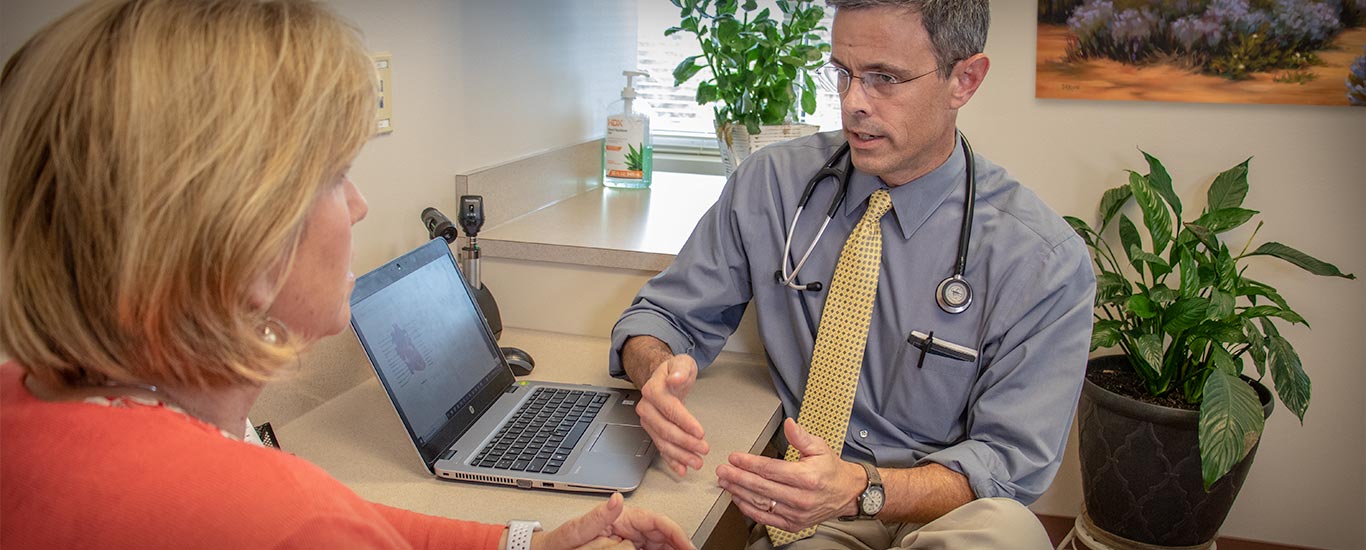Dr. O’Connell Explains Covid-19 and Answers Listener Questions
on Faith Works on Catholic 540 AM Radio
Ellen’s intro to the show: “Faith Works highlights individuals that put their faith in to action every day. Amazing people who have an interesting and sometimes overlooked impact on our Catholic faith. We share their stories”
Catholic 540 AM – https://catholic540am.org
Divine Mercy Radio – station covers over 90% of the parishes in central and eastern NC.
In this interview, Ellen speaks with Dr. O’Connell about the difference between coronavirus and COVID-19. She asks him to explain how the virus is transmitted, what symptoms we may experience and when we should expect these symptoms to appear. Ellen then takes listener questions for Dr. O’Connell to dive into.
From the Radio Interview:
What is the difference between Coronavirus and COVID-19?
“Coronavirus is a family of viruses,” said Dr. PatrickO’Connell. “These days when people talk about coronavirus what they mean is the coronavirus that emerged out of China during the wintertime…now the nomenclature of the recent coronavirus is COVID-19, which is an acronym for coronavirus disease 2019.”
What are the symptoms of COVID-19?
The symptoms are similar to those of other respiratory viruses, so there’s nothing really uniquely distinctive about it, which is part of what makes it challenging to diagnose. “You might see things like a cough, fever, and sore throat, but it’s a little less likely to cause head cold symptoms than your run-of-the-mill cold virus,” he said. “You might see the same things that a run-of-the-mill cold virus could do, or that the flu influenza could do, with this coronavirus, but respiratory viral symptoms are the main symptoms of the current coronavirus.”
How do you prepare for it?
“It’s hard to prepare for,” said Dr. O’Connell. “For years infectious disease folks were saying ‘we’re due for a pandemic,’ but we didn’t know what form that would take and what infectious organism it was going to be.”
The Ebola virus created a big scare but it never really got to full steam for being transmitted widely, so ones like this are harder to prepare for. “We have some broad brushstrokes of plans in place but it’s hard to say for sure: it’s this kind of virus, and here’s how it’s going to spread, and here’s how we’re going to be prepared for it.” Dr. Patrick O’Connell explains. “Obviously, information is changing by the second.”
What is your protocol for treating patients?
“We’ve had to really upend how we handle respiratory viruses in the office,” he said. “It used to be just three weeks ago, if somebody had a cold you’d say ‘come on in we’ll check it out and see what’s going on,’ but now it’s like if you got a cold, oh my gosh don’t come into the office—whatever you do, don’t go see a doctor!”
Doctor office protocols have drastically changed in light of the pandemic. “What we do now is if someone is mildly sick with a cold, I’ll have a phone visit with them but I generally don’t recommend folks come into the office, both for the sake of the next person who comes into the office so they don’t risk infection, and for the sake of my staff,” he said. “I have a phone visit to kind of assess symptoms and try to figure out what to do. If someone were severely sick, I would say go to the emergency room.”
It’s that middle group of people that are moderately sick that need to get checked out, because maybe they have pneumonia rather than coronavirus, or maybe it’s the flu rather than coronavirus. “Those middle folks I have to bring into the office, so we have a hyper neurotic protocol for how we get them in,” he added. “We keep ourselves protected where we’re super gowned up and shielded with all this protective equipment and give people instructions when you get to the parking lot, call us and I’ll get on the phone with them and ask the questions I need to figure out what testing we’re going to do.”
The patients are given masks and brought into the room very quickly. “We examine them and do whatever testing is needed then whisk them back out and sanitize the whole office after they’ve left,” he said. “It’s a major protocol and a major effort just for one person to come in because they got sick.”
How is COVID-19 transmitted?
“It’s transmitted the same way that cold viruses are, so by respiratory transmission,” said Dr. O’Connell. “Somebody sneezes next to you and that cloud of droplets that’s suspended in the air comes in contact with new surfaces.”
“It also can spread through surface contact, so if a sick person touches a doorknob and then you touch the doorknob behind them, now your hand has the virus on it and then if you rub your eye, that’s another way you can get infected,” he added.
How do we prevent the spread of this coronavirus?
“There’s social distancing and the idea is people are supposed to stay far enough away from other people that if they cough or sneeze, you’re out of range for their droplets,” said Dr. O’Connell. “Also try to be very mindful of surfaces you might come in contact with, such as that grocery cart handle, any doorknob, the counter at the doctor’s office as you’re checking in, and then not touching your face.”
You can be a carrier and not have symptoms
The phenomenon of asymptomatic has been very clearly documented with other strains of coronavirus that are more common cold viruses. “It’s not a weird thing for coronaviruses, they don’t always make people sick,” he added.
The availability of tests is ramping up. Places like LabCorp test, doctors’ offices, and some of the regional healthcare systems have developed their own in-house tests so they can process it in-house.
“I am doing tests in my office and then I hand them over to LabCorp,” said Dr. O’Connell. “You get results in three to four days from LabCorp. I saw a report that UNC was able to get test results within 24 hours for hospitalized patients. It’s not lightning fast like a rapid strep test or flu swab that you can do in the office and have results ten minutes later. It’s a several-day turnaround.”
What is the current plan to deal with COVID-19?
What we are attempting to do in the U.S. and what other countries are attempting, is isolation in order to slow the spread of the virus with a couple of objectives in mind. The first objective is to slow the spread of the virus so that a subgroup of people who are going to get severely sick, gets sick slower, so the health system can keep up with their care. “Envision some isolated hospital that has five ventilators and ten people become severely sick at this same time with all of them needing a respirator, then five people are in deep trouble,” said Dr. O’Connell. “So the idea is if those same ten people get sick but instead of all at once, they get sick over six weeks, well now only a couple people at a time need the ventilator, so you can keep up. That’s part of the strategy with attempt to slow the virus.”
People do clearly get very sick with this virus, but that seems to fortunately be a smaller percentage than what the initial data would have indicated. “Although I think lots and lots of people will eventually be infected with the current coronavirus, I don’t think that lots and lots of people will become deathly ill,” said Dr. O’Connell. “I think most of those people will have a mild illness or no detectable illness at all.”
People with pre-existing conditions are the ones that seem to suffer the most. Age and coexisting medical conditions are risk factors for a worse case with infection. “Experience so far has confirmed that younger children are at relatively lower risk of symptomatic infection, which is nice because so often with the flu, it’s folks who are older who have coexisting medical conditions and the very young are the ones whose lives are the most in danger,” he said. “So it’s good to see that at least one of those groups, the young kids, seem not to be in as much danger. That being said, there are still instances of kids getting very sick and deathly ill with COVID-19, but the frequency among children seems to be lower than it is in other groups within the population right now.”
That’s part of the fear with coronavirus, that it becomes this sweeping infection that’s fatal to lots and lots of people, and that’s what drives a lot of that effort from a public health standpoint to take such remarkable measures to shut everything down and separate everybody from each other.
Wearing a mask reduces the risk of infection
Now that coronavirus is becoming more widespread in the community and asymptomatic infection has been identified and mildly symptomatic infection has been identified, if someone is out having potential public contact, they should wear a mask.
“A mask will not only reduce the risk of respiratory viral infection, it also serves as a physical barrier that keeps your fingers away from your face,” he said “It’s going to be 2021 before we have a vaccine, assuming that one of these vaccines they’re testing works, so I don’t know and who knows what will happen.”
According to Dr. O’Connell, there are a couple components to how isolated you should be. “First, it depends on a person’s risk so if someone were in poor health and their life might be in danger if they were infected, that’s somebody who may choose more restrictive self-isolation,” he said. “There’s an assessment of somebody’s risk if they got sick and risk of infection that can guide some of those decisions.”
Clearly there’s one level of risk if you are in an elevator with six other people versus
another risk if you’re walking on the greenway and you’re the only person there.
“If you’re outside and respecting six-foot limits and it’s a breezy day that blows the virus away, you’d probably be at extraordinarily low risk,” he said. “Being outdoors is very minimal risk and you can think of it the same way with colds, if the person who lives across the street has a cold and you’re sitting on your front porch, there’s really no concern there.”
This virus is probably going to be with us for a while and there’s only so long you can live in a state of high panic before you just get exhausted, so figure out what your system is going to be in terms of your activities and then enjoy some TV, read a good book, and pray the rosary. Try not to live in a state of high panic continually because we may have to settle in for a while of dealing with this virus in one form or another.
About Sentinel Primary Care
Sentinel Primary Care has offices in Brier Creek, just off the highways for easy access. Dr. O’Connell has been seeing patients who needed testing for COVID-19, and his office has adopted protocols that protect patients and staff during the pandemic. As a “direct primary care” practice, members can schedule a tele-health appointment for no extra charge. Those considering Sentinel Primary Care are invited to contact us to schedule a tele-health call.
To learn more about our practice view our “Meet Sentinel Primary Care” video playlist, or take a look at our playlist selections.


